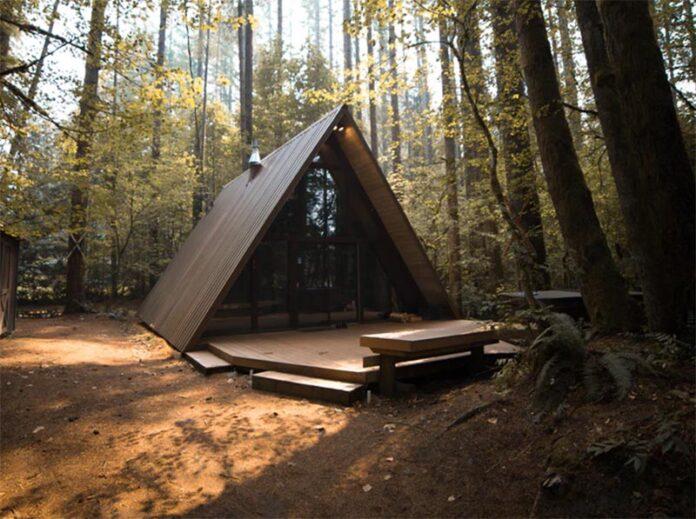
Staying indoors is much more pleasant than trying to survive outside. However, in some situations, you might need to leave your home and bug out elsewhere to survive.
Usually, you have two choices. You can either go to another urban area that’s unaffected or you can go to a wilderness environment. It all depends on the situation. If there are violent riots in the city and you have a choice between passing through roads there to get to another urban safe zone… or… taking another route that leads to the woodlands where it’s much more isolated, you’re better off in the wild.
However, once you get to the wilderness environment, you need to choose a good location to set up your shelter. It’s best that you bring a camping tent that you can easily set up as shelter.
Do not think that you can use sticks, branches and leaves to make shelters like a debris wall. You’re not Bear Grylls. Most people just don’t have the experience to build such shelters well. You need a lot of practice and even then, it can be time-consuming and draining to scavenge for sticks and other material to build your shelter.
Just bring a camping tent. If you want, you can bring tarps and other camping equipment to set up a good tent. They’re more cumbersome but if you can transport them, you could do it.
When you get to your location, even if you have a camping tent, you want to look for a sheltered spot so that you’re not exposed to the elements. If you set up a tent in an open area, you’ll be exposed to the heat, cold, sun, wind, rain and even wild animals around.
Find a place that’s secure and not exposed. A fallen tree might offer cover on one side. If you find some overgrown vegetation, you can clear the ground a bit with an ax. Set up your tent there and you can pull the overhanging leaves and stems over your tent to provide some camouflage.
Remember to set up your shelter close to a water source but not too close. When digging a latrine, you want it to be at least 30 meters away from your shelter and nowhere close to your water source.
You have to factor these considerations in mind when choosing your location. Check the surrounding areas close to your shelter to make sure you’re not close to any pests like ants, hornets and other dangerous insects.
You should not build a fire close to your shelter if you’re surrounded by dry leaves and wood. This is a fire hazard and one spark could light up the entire area and burn down your camping tent. Make sure you start a fire in a spot that’s clear of any flammable material.
Do check if there are any heavy branches above your tent. You don’t want a dead branch from the top of a tree crashing on you while you’re sleeping. It’s best to set up shelter on the fringes of the woods. If you’re too deep inside, it will be damp, dark and depressing.
You want to be protected to a certain extent but also able to get out of where you are easily. Besides the woods, there are deserts, caves, mountains, jungles and even snowy areas that you can take shelter in. It all depends on where you live. Know the terrain you might face and prepare accordingly.





















